With so many effects and hybrid multi-effects guitar pedals on the market, it’s easy for beginners to quickly feel overwhelmed. There is a conventional order for guitar pedals based on which effects ideally work with a dry or processed audio signal. We’ll do our best to demystify things as briefly as possible.
Choosing the Right Pedalboard – The right dimensions to fit all your pedals
How to Power Your Guitar Pedalboard – Choosing the right power supply
Finding the Right Footswitches – Controlling the channels on your amplifier
Connect Your Pedals with Patch Cables – Figuring out the right length and space
Define Your Guitar Pedalboard Order – A suggested order of effect types and why
True Bypass vs Buffered Bypass – A simple explanation of different bypass types
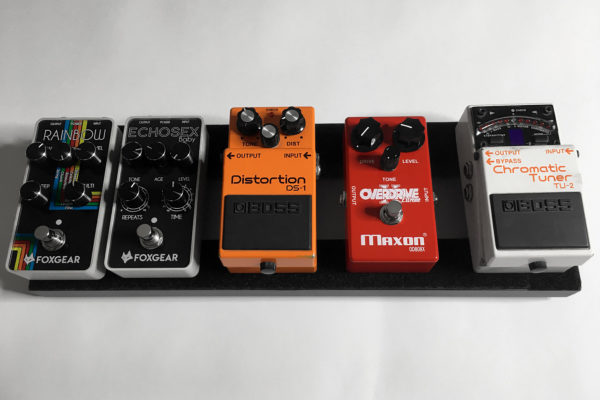
The Most Important Rule is There Are No Rules
While many guitarists place pedals in a conventional way, there are no set rules. Just remember that when you have multiple effects engaged, the pedals closer to the end of the chain will filter the entire sound before it. The most important thing is to be creative and find the sound that inspires you. If that means you assemble your pedals in an unusual order, nobody can tell you you’re wrong.
Your Guitar Pedalboard Set-up – Getting Started
The guitar pedal market has exploded in recent years, saturating the market with options galore for every piece you could use for your pedal board setup. With so many options, it’s important to know what to look for and do your research.
Choosing the Right Pedalboard
If you’re like the average guitarist, pedals probably find their way on and off your board. It’s important to know when building a guitar pedalboard how many pedals you need, between those you currently have and maybe some you expect to get in the future. Pedalboards come in many different shapes and sizes to accommodate large and small setups. One helpful resource is the Pedaltrain Pedalboard Planner. You can select from popular pedals and the different size boards Pedaltrain offers to see how they fit.
The market also offers many configuration options. Some pedalboards will have small holes to hide your cables discreetly underneath the board like the Templeboards Duo Series, or several horizontal strips like the Pedaltrain Classic. Another option is to have a switcher built into the pedalboard like the Voodoo Lab Dingbat, which helps you program multiple pedal paths and combinations with a single switch. For those with a very large pedal setup, the Vertex Travel Plus includes a riser to add an additional level to your pedalboard without occupying more floor space. With this option you will lose the ability to engage some effects, so these are likely pedals that will always be engaged, or activated using a switcher.
Pedalboard Sizes – Powerful vs. Portable
The size of your pedalboard will be determined by the number of pedals you have, and also how you want to use it. If you’re somebody who is doing lots of gigging and carrying your equipment around all the time, chances are you will want the most portable solution, which favors smaller, lightweight options. If you mostly play and record at home, chances are greater that you love having your “space station”, and a more robust pedal board with all the bells and whistles may be what most inspires your creativity.
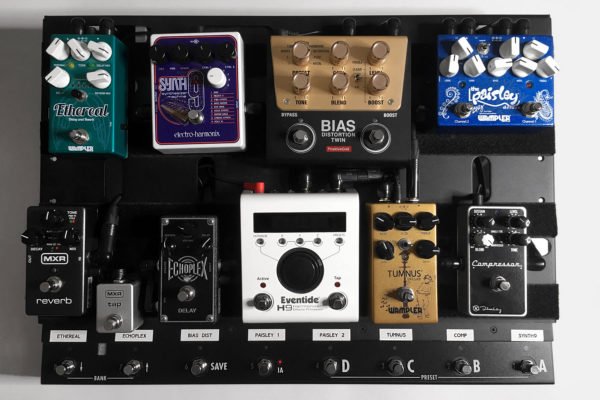
How to Power Your Guitar Pedalboard
Each guitar pedal will require power to operate. Most pedals will have a DC output which gets powered through a power supply. There are many options on the market, but you want to make sure your power supply has enough outputs to power the pedals on your board, and with the correct voltage required for that pedal. It may not always be the most ideal solution, but it’s sometimes necessary to use a Daisy Chain Extension Cord from the same power source to various pedals.
The reason it’s ideal to use a designated power supply rather than just plugging directly into a wall is that a power supply can help isolate your pedals from interference and additional noise. Power pedals run on DC (direct current), while AC (alternating current) is the power that comes from our walls. Some pedals will come with “wall warts” that will transform AC into DC voltage and amperage, like 9 volts. Be mindful of the milliamps (mA) that your pedals require so you use the correct output on your power supply. Usually pedals are 100mA or below, but those higher would need a designated output with higher amperage to be powered.
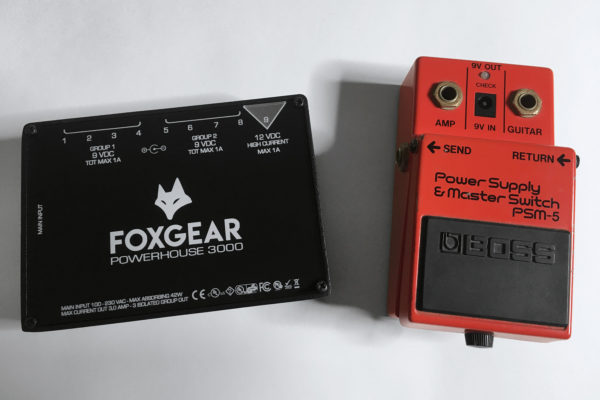
Finding the Right Footswitches
For amps that have multiple channels, you may want to save room on your board for a footswitch. Some amps come with their own, but Hosa also makes TRS Footswitches that will work with most amplifiers and are economical in space.
Connect Your Pedals with Patch Cables
One thing you learn quickly is that cables take up a decent amount of real estate on a pedalboard. Each pedal has either side mounted or top mounted inputs and outputs that will influence both where they are placed on your board and what types of guitar patch cables are needed. For pedals connected right next to one another, 6” cables work best, but often you will need 12”, 18”, or 24” patch cables to connect pedals around your board.
As each pedalboard has unique requirements, Hosa currently offers seven variations of guitar patch cables. Hosa’s assortment provides players with nearly every option they could need, including variations in length, space-savings, and sonic integrity.

Pedal couplers are also another option, though these are not great solutions for pedals that will be stepped on. This solution can damage the coupler or the jack on your pedals over time as jacks are never truly aligned perfectly and applying weight with your foot will add stress. If you use these, make sure they are for pedals that will always remain on and may be engaged with a loop switcher.
Define Your Guitar Pedalboard Order
When it comes to your sound, there is no exact science to follow, but below is a common order of effects based on how each will alter the signal before it.
-
1. Tuner
- The best place for your tuner is right at the start of your chain. That’s because when you tune, you want the purest signal directly from your guitar. If a pedal were to be before it, the signal might be manipulated or degraded and tuning becomes inconsistent. Most tuners also mute anything after it in the chain when it’s engaged.
-
2. Filters
- The most common filter is a wah pedal. These work well earlier in the chain to manipulate the raw sound of your guitar to then add textures with other effects later in the chain.
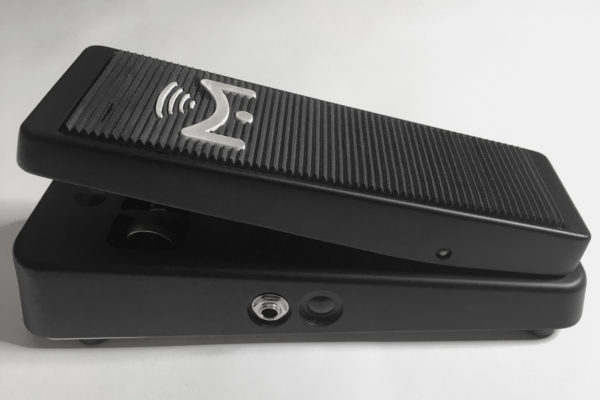
-
3. Compressors
- Compression will add fullness to your sound. It can also help your playing sound more dynamically consistent, such as light and heavy strumming having a similar attack.
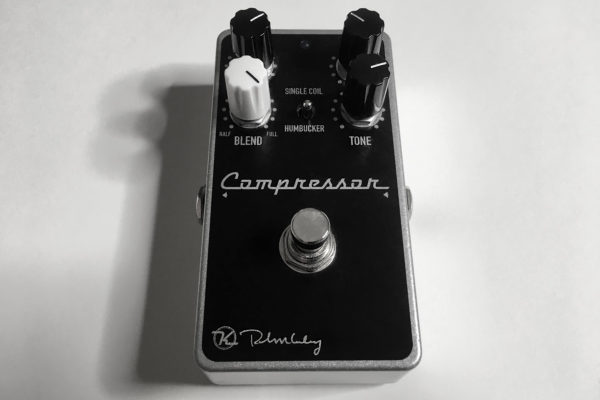
-
4. Pitch Shifters
- These are effects like octavers, arpeggiators, and anything that changes the pitch of the notes you play. You likely want these before any type of gain since a clean signal gets a more accurate representation of that pitch.
-
5. Overdrives
- Probably the most common effect on any pedalboard, overdrives boost the signal from your guitar into the amplifier, which is why they are often called “boost pedals”. These are used to add some grit to clean sounds or tighten the low end on high gain amplifiers since they emphasize the midrange, and the guitar is a midrange instrument.
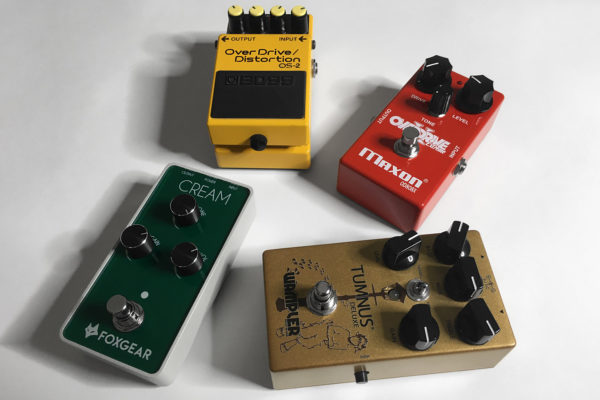
-
6. Gain
- Distortion and fuzz pedals add compression and “dirt”, giving the sound a harder edge that is quintessential for rock and metal-style playing.
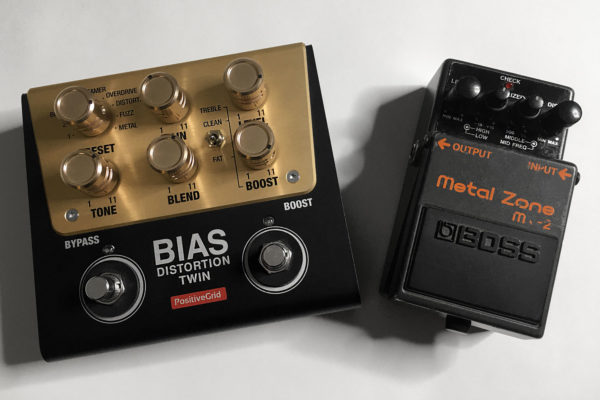
-
7. EQ
- This is a hard guitar pedal to know where to place since it’s there to refine a sound, either to emphasize or minimize a certain frequency. Some players EQ the raw sound coming out of their guitars, others put it here after distortions, which can create harshness in certain frequencies that an EQ pedal will help tame.
-
8. Noise Gates
- These can also go several places in the chain depending on where the most noise is generated that you want to control. Often noise gates are added after the gain stage, since increasing the gain also increases noise and distortions that not all players find pleasant, especially if they want a tight, articulated sound.
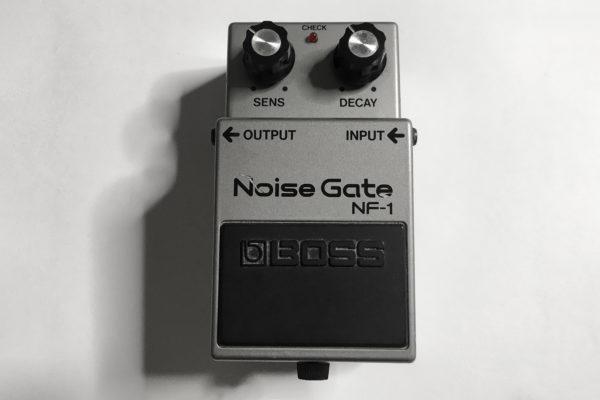
-
9. Modulation
- These effects include phasers, flangers, chorus, tremolo, and vibrato. You would most often use these to modulate the entire sound up to this point.
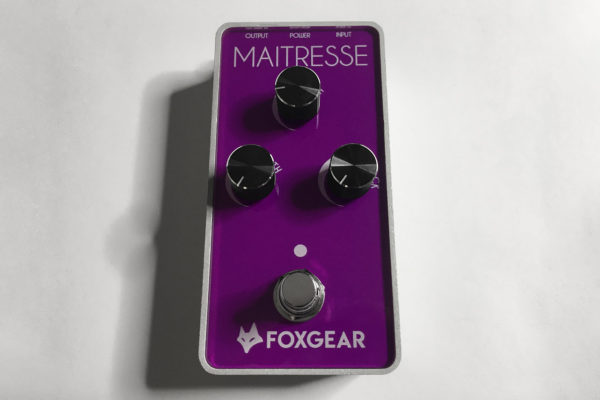
-
10. Time-based
- There is some debate among players as to whether the delay or reverb pedal should go first, but in most instances reverb goes after the delay. These pedals help give the listener an impression of the environment everything is being played in. Less reverb and delay makes things sound more focused, while lots of reverb and delay gives the listener the impression of a larger space and sound stage.
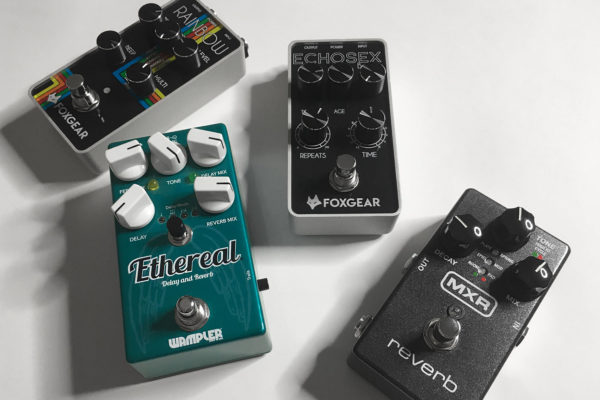
-
11. Volume
- Some people also prefer to have the volume pedal in the beginning of their chain, meaning if they do volume swells, time based-effects like reverb and delay will give a more spacious, ambient trail effect. At the end of your chain, the volume pedal will quiet or silence everything immediately.
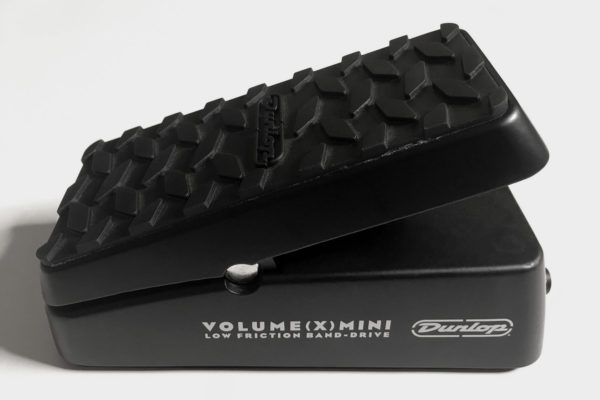
True Bypass vs Buffered Bypass
If you’re researching pedals, these are terms you have encountered many times. A true bypass pedal means that when it is disengaged, the signal passes through the pedal unaffected. While that doesn’t color your sound, it extends the run of cable through your board, which can sometimes lead to signal degradation. Buffered bypass pedals boost the signal even when disengaged, allowing for you to have longer cable runs without the signal strength degrading, though this will come with some form of coloration to the sound.
Change is Inevitable
Each year there are more and more new pedal options and manufacturers. Chances are you will go through different pedals and boards trying to find the right fit for you, or maybe it’s just fun to experiment with all the sounds and options out there. In either case, just as innovation and evolution are the norm in the pedal world, so should it be in your creativity. Experiment and blaze your own path.
If you want more information on the different patch cable styles Hosa offers, please visit the Guitar Patch Cables page on our website. With options from pancake style connectors to genuine Neutrik tips, Hosa’s assortment has what you need to best fit the type of board you’re making, on any budget.
- Hosa
